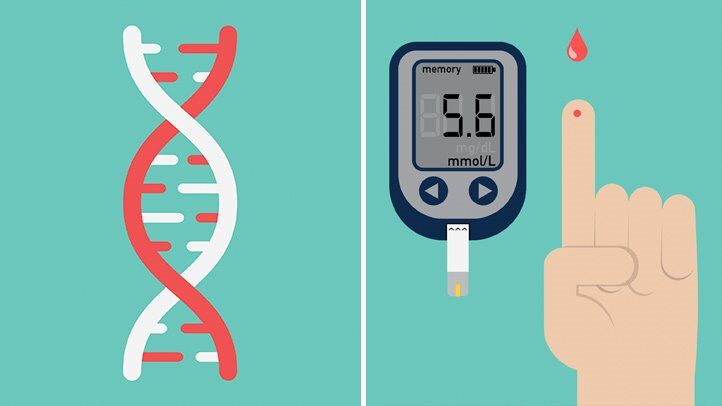Generally, it has been seen that beta cell function continues to decline after diagnosis of type 2 diabetes, while insulin sensitivity remains relatively stable. In the gradual transition to type 2 diabetes, many patients initially have impaired glucose tolerance, which deteriorates progressively over several years.
Moving ahead, read more about Beta cell dysfunction
The continued high demand for insulin on beta cells contributes to beta cell failure, but this has not seen firmly established. Other factors such as genetics, glucotoxicity, and lipotoxicity may also contribute to impaired beta cell function. There are multiple factors to beta cell dysfunction in type 2 diabetes;
Genetics
There is a strong familial risk of developing type 2 diabetes. However, a single genetic cause of most cases of type 2 diabetes is unknown. With the exception of patients with known rare genetic mutations, it is unlikely that only one gene defect causes type 2 diabetes; rather, there are many genes involved (called polygenic etiology).
Certain genetic backgrounds may be more susceptible to environmental triggers that initiate the progression from mild insulin resistance to glucose intolerance to the development of type 2 diabetes. Some key findings in the genetics of type 2 diabetes are;
- Insulin resistance is diminished in first-degree relatives of patients with type 2 diabetes, suggesting that beta cell dysfunction may be genetically determined. First-degree of patients with type 2 diabetes showed evidence of insulin resistance before they developed diabetes.
- Maturity Onset Diabetes of the Young ( MODY) is a specific subset of type 2 diabetes with the onset at a younger age (usually before 25 years); this type of diabetes is not prone to develop ketosis. The family of genetic mutations that cause MODY affects various functions of the beta cells by causing changes in the expression of critical genes required for normal beta cell function, thus resulting in expression of type 2 diabetes at a younger age.
Glucotoxicity
In the short term, glucose stimulates an increase in the production and release of insulin. However, after chronic continuous exposure to hyperglycemia, insulin secretion can be inhibited.
Normally, glucose is rapidly metabolized in cells, but prolonged exposure to high glucose levels appears to be associated with oxidative stress, which impairs the ability of these cells to tolerate and recover from the high glucose levels. Sustained hyperglycemia can turn off genes that protect the cell from death. Some specific mechanisms have been elucidated;
- Chronic hyperglycemia increases oxidative stress inside the cell and can shut down new insulin production.
- Beta cells may be particularly susceptible to glucotoxicity due to a low level of activity of antioxidant enzymes in these cells.
- Glucotoxicity may affect the expression of genes that are critical for making the components of the insulin secretory granules. Replenishment of the granules is critical for maintaining insulin secretory capacity of the beta cells.
Lipotoxicity
Lipotoxicity (i.e. hyperlipidemia or high-fat levels in the blood) has been shown to cause reduced secretion of insulin in animals after prolonged exposure. Lipotoxicity also alters the proinsulin/insulin ratio, a measure of beta cell function. A high proinsulin/insulin ratio suggests beta cell dysfunction, reflecting a defect in insulin processing (biosynthesis) and secretion. Accumulation of lipids inside beta cells contributes to beta cell death since certain types of fatty acids can disrupt normal cell signaling.
Lipotoxicity may act synergistically with glucotoxicity to diminish beta cell function, reduce insulin secretion, and promote cell death.
Anatomic and Histopathologic Changes
As discussed previously, there are several structural abnormalities of the islets of the pancreas that can be seen in type 2 diabetes. These include decreased beta cell mass and accumulation of interstitial amyloid deposits.
Normally, beta cell mass is regulated by balance between the formation and division of new cells and natural cell death. In type 2 diabetes, there is an imbalance between beta cell production and beta cell loss, resulting in greater destruction than production of beta cells.
